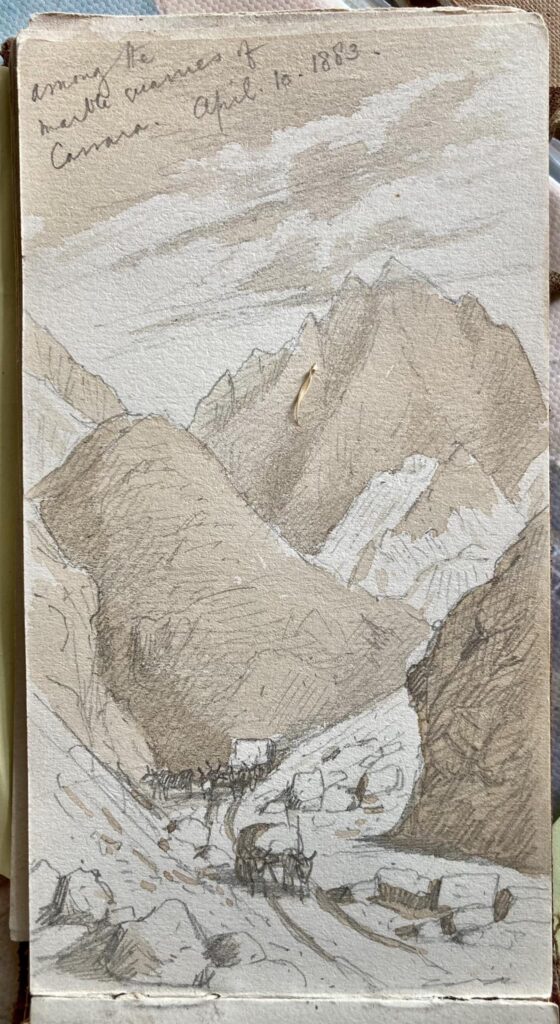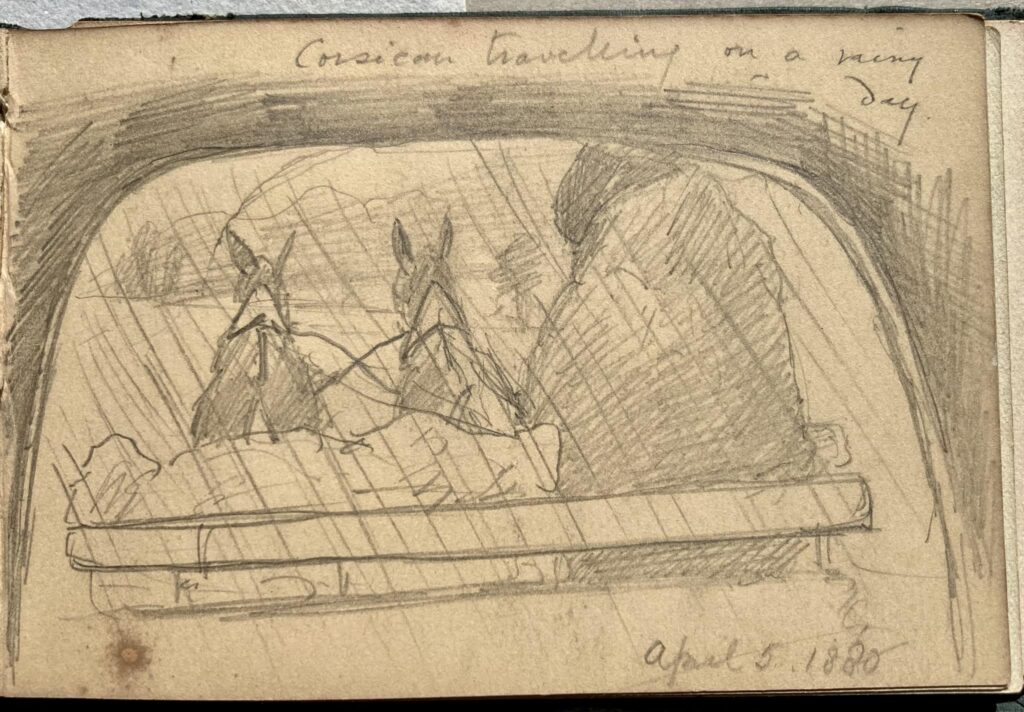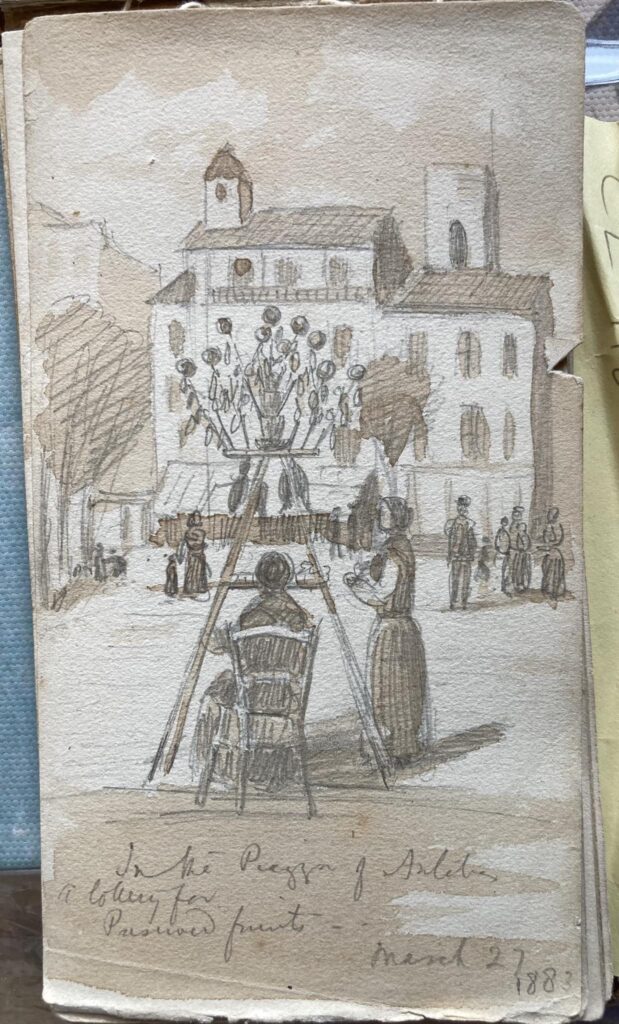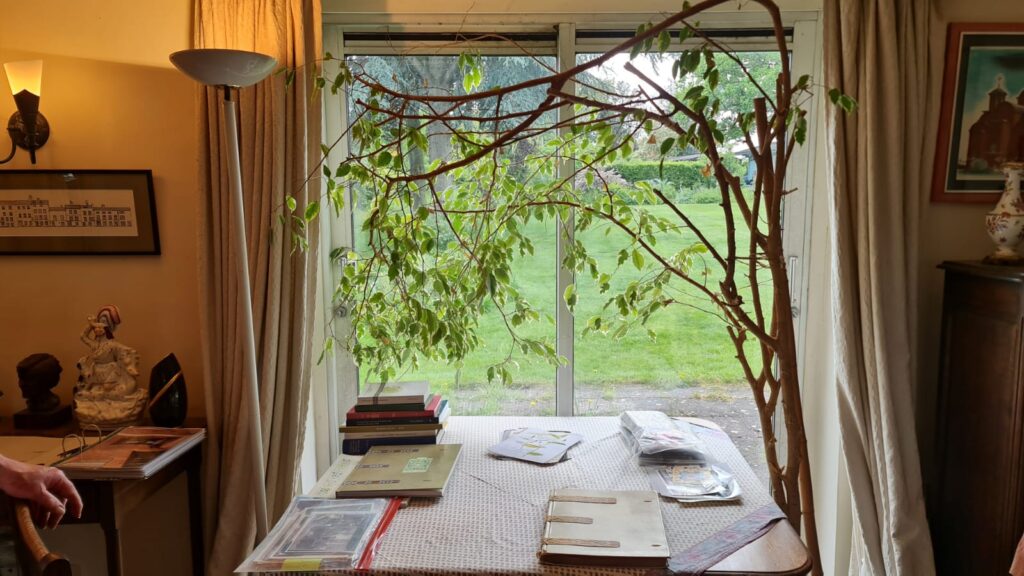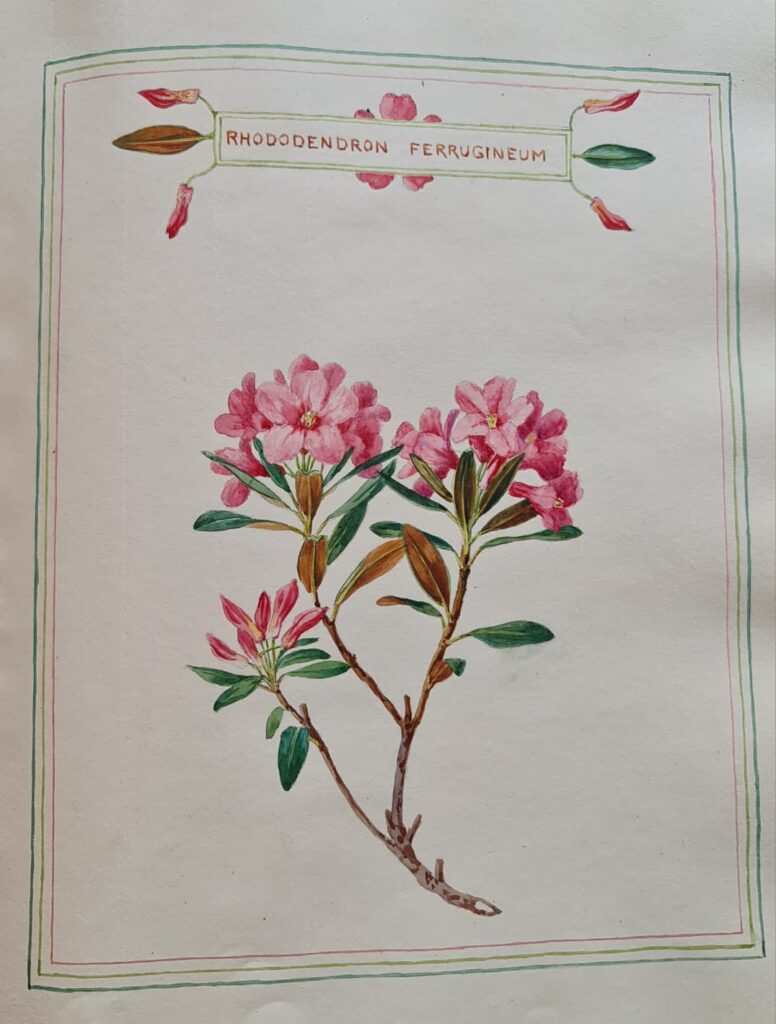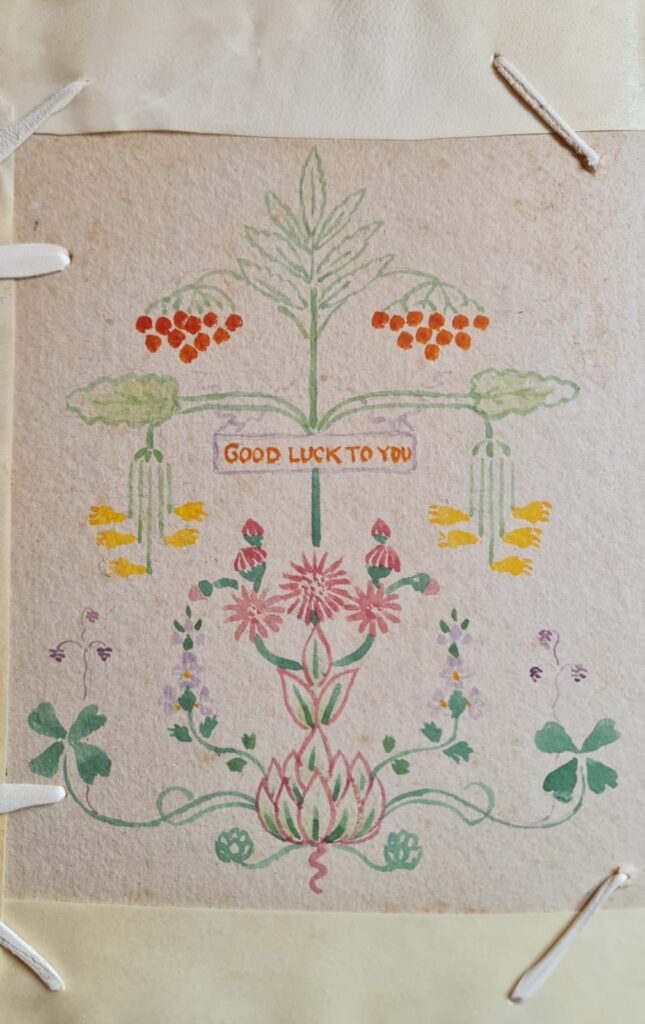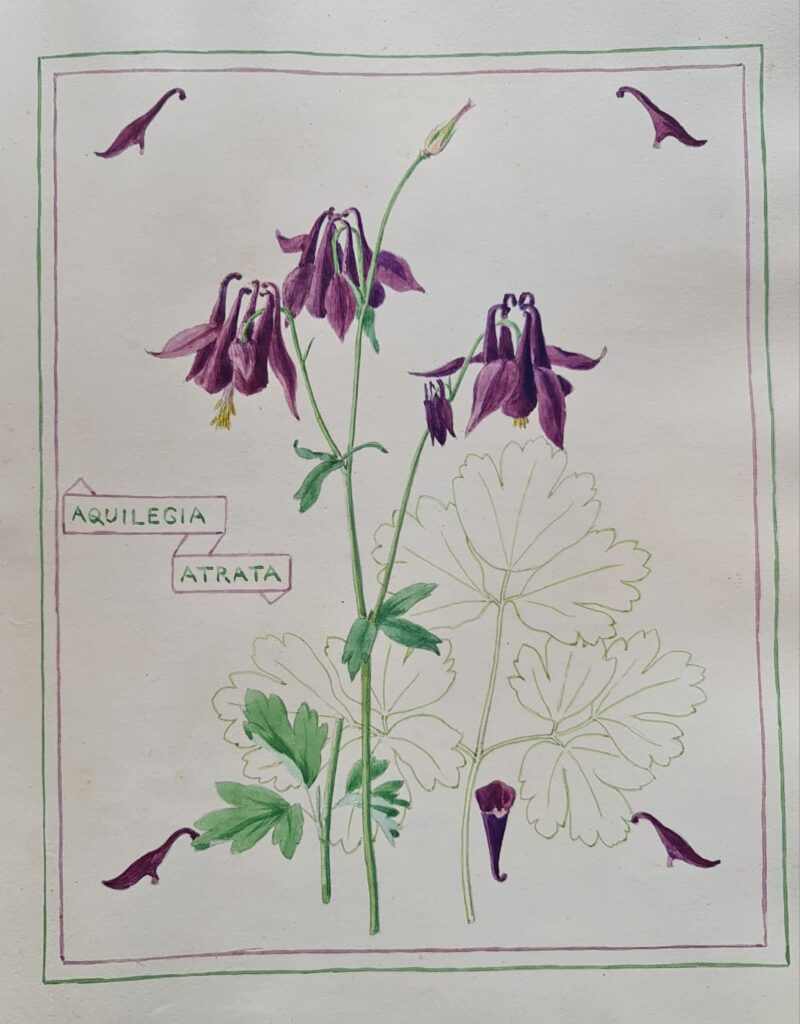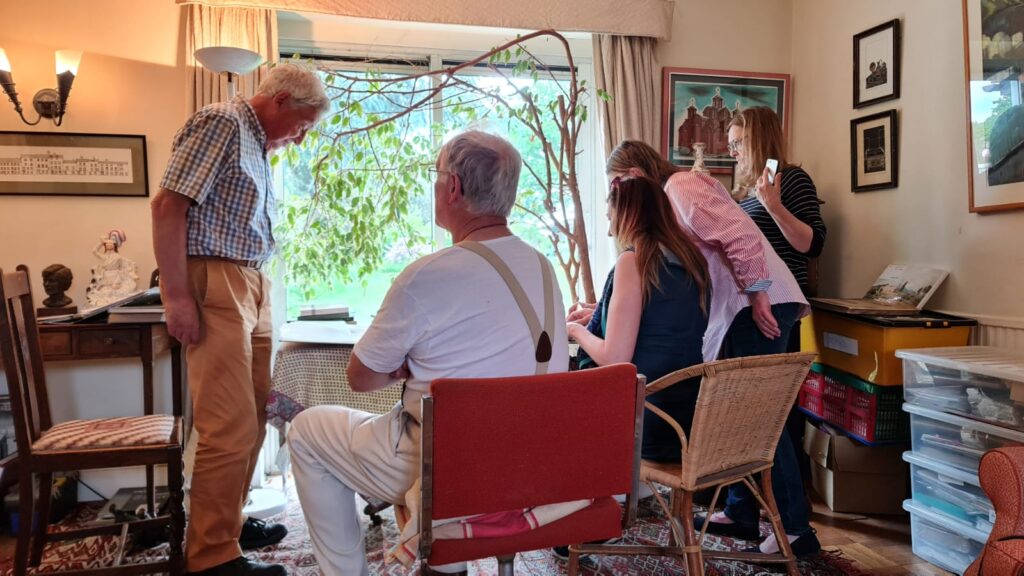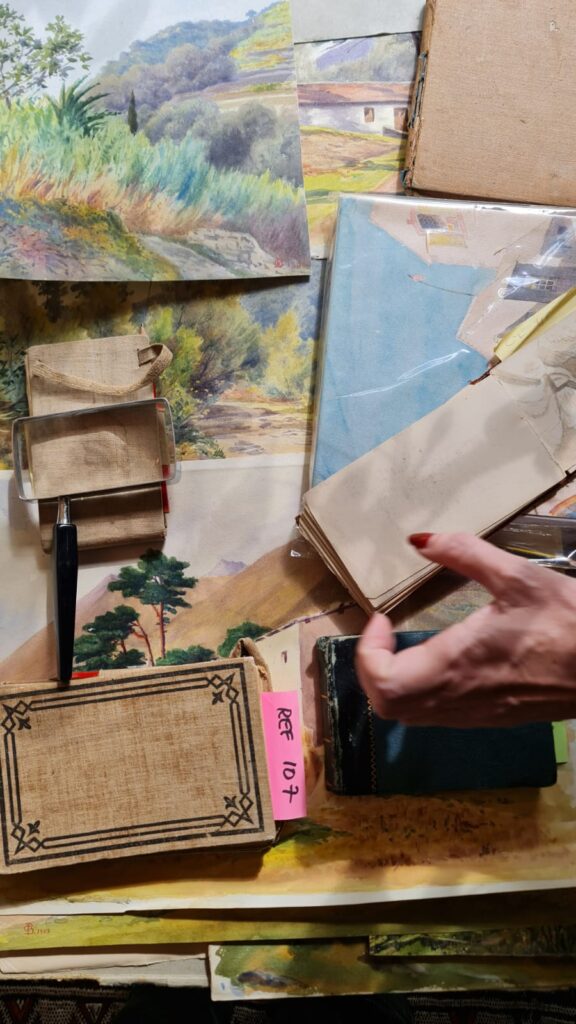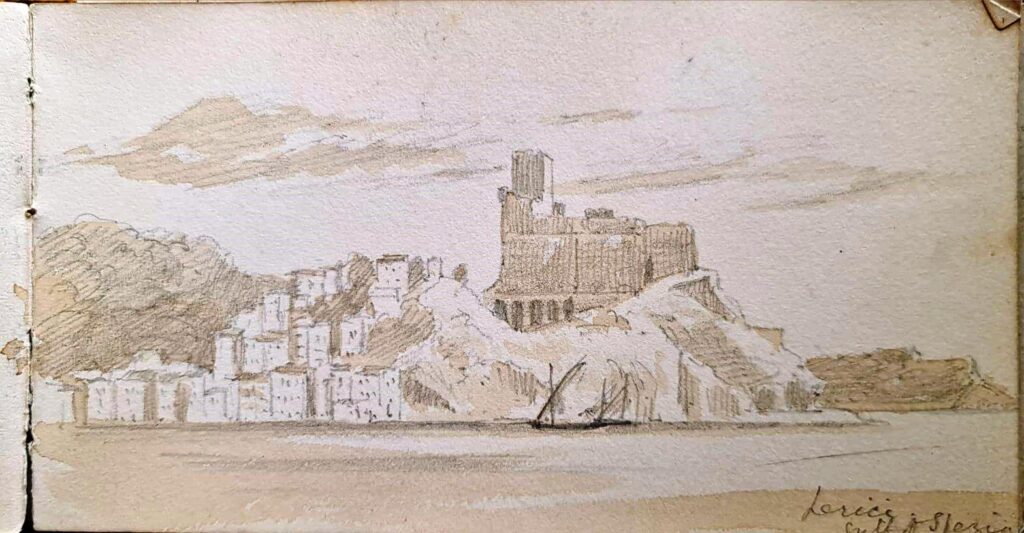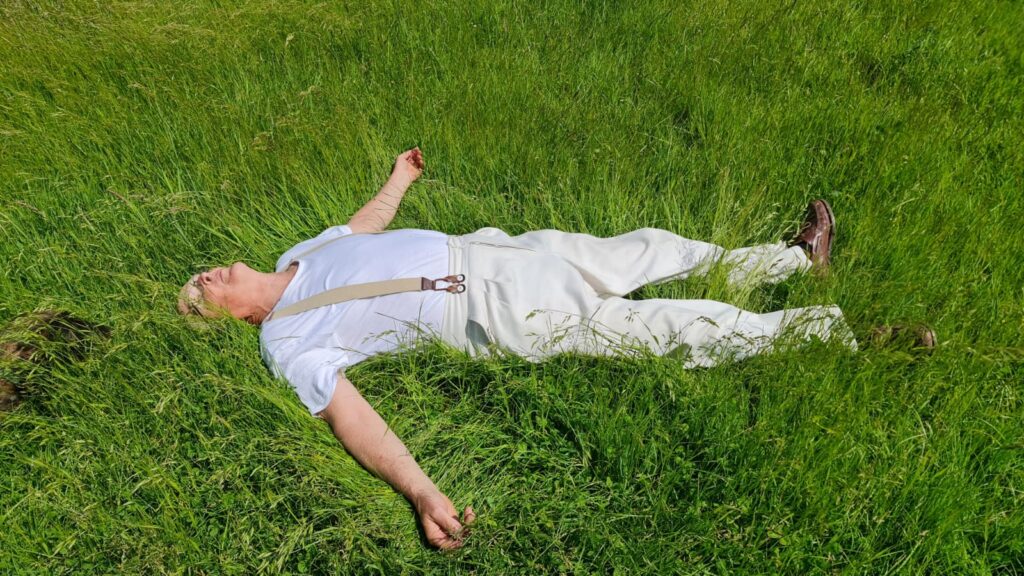We were at the presentation of the book The English in Liguria at the Italian Embassy in London on Thursday. Continuing the theme this week of the Italians’ appreciation of Clarence Bicknell’s works 1842-1918, we were delighted to host the visit of Francesca Centurione-Scotto Boschieri (Chair of the Amici dei Giardini Botanici Hanbury, founder-member of the St George’s Club for cooperation between Genova and the City of London and Genova’s Ambassador to the World) and friends to Homefarm Orchard. We all enjoyed looking through Clarence’s albums of botanical watercolours and “cahiers de voyages”, his pocket sketchbooks. Francesca enthused over how these sketches, each marked by Clarence with the date and the place, will look on a giant map of Liguria in the 2024 exhibition in the Guildhall Art Gallery in London which she is helping us and the gallery to prepare.
In the photos you will see Francesca, Patrizia Zanardi (founder-member of the St George’s Club), Michael Thalmann (concert pianist and teacher, Switzerland, who also took the photos, thank you), Paula Robinson (novellist), Chloe Emmerson and her father David, Blueby and Prince the Trakehners and Joey the 6.2litre V8 Ford Ascar.
Note the first sketch here which Clarence titles “Among the marble quarries of Carrara, April 10 1883”. This is how the giant blocks were transported 140 years ago. Wiki writes… Carrara marble, Luna marble to the Romans, is a type of white or blue-grey marble popular for use in sculpture and building decor. It has been quarried since Roman times in the mountains just outside the city of Carrara in the province of Massa and Carrara in the Lunigiana, the northernmost tip of modern-day Tuscany, Italy. More marble has been extracted from the over 650 quarry sites near Carrara than from any other place. The pure white statuario grade was used for monumental sculpture, as “it has a high tensile strength, can take a high gloss polish and holds very fine detail”. By the late 20th century this had now run out, and the considerable ongoing production is of stone with a greyish tint, or streaks of black or grey on white. This is still attractive as an architectural facing, or for tiles.
See less
